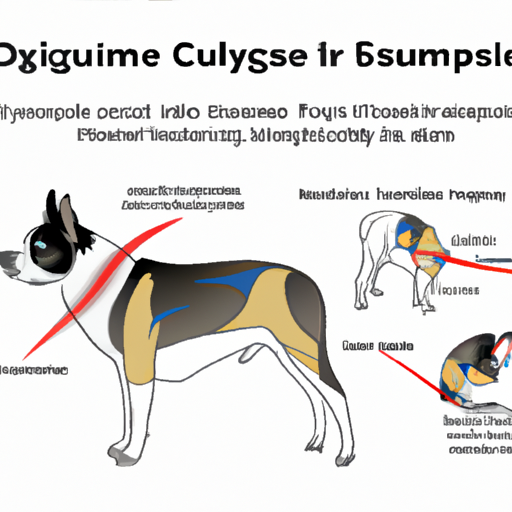Understanding Cushing Syndrome
Cushing Syndrome, also known as hyperadrenocorticism, is a condition in dogs that results from an overproduction of the hormone cortisol. Cortisol is a vital hormone that aids in the regulation of bodily functions such as metabolism and immune response. But like many things in life, too much of a good thing can turn into a bad thing. When your furry friend’s body produces excessive amounts of cortisol, it can lead to serious health problems, including Cushing’s Syndrome.
Signs and Symptoms
Your canine companion can’t tell you when they’re feeling unwell. But they can show it. Here are some signs and symptoms to look out for:
- Increased thirst and urination
- Increased hunger
- Hair loss
- Pot-bellied appearance
- Skin issues, including thinning skin, bruises, and infections
Causes of Cushing Syndrome in Dogs
There are two main causes of Cushing Syndrome in dogs:
-
Pituitary-dependent Cushing’s syndrome (PDH): This is the most common cause, accounting for about 80-85% of cases. It occurs when a benign tumor in the pituitary gland causes an overproduction of a hormone that stimulates the adrenal glands to produce cortisol.
-
Adrenal-dependent Cushing’s syndrome (ADH): This accounts for the remaining 15-20% of cases. It happens when a tumor, either benign or malignant, forms in one of the adrenal glands, causing it to produce excess cortisol.
Diagnosing and Treating Cushing Syndrome
Concerned your pet may have Cushing’s Syndrome? The first step is to get them to a veterinarian for a proper diagnosis. The vet will likely perform a series of tests, including blood tests and ultrasounds, to confirm the diagnosis and determine the cause.
Treatment will depend on the cause of your dog’s Cushing’s Syndrome. If it’s PDH, medication is usually prescribed to control cortisol production. If it’s ADH, surgery may be needed to remove the tumor.
Living with a Dog with Cushing Syndrome
Living with a dog diagnosed with Cushing’s Syndrome can be challenging, but with the right care and management, your dog can still lead a fulfilling life.
Here are some tips to help manage your dog’s condition:
- Regular vet check-ups: Regular vet check-ups are crucial in monitoring your dog’s condition and adjusting treatment as necessary.
- Balanced diet and exercise: A balanced diet and regular exercise can help control your dog’s weight and improve their overall health.
- Emotional support: Dogs with chronic conditions can often sense their human’s worry. So, it’s important to provide emotional support and a calm environment for your pet.
FAQ
Q: What breeds are more susceptible to Cushing Syndrome?
A: While any breed can develop Cushing’s Syndrome, it’s more common in Poodles, Dachshunds, Boxers, Beagles, and Boston Terriers.
Q: Can Cushing’s Syndrome be cured?
A: While there’s no cure for Cushing’s Syndrome, it can be effectively managed with proper treatment and care.
Q: How long can a dog live with Cushing’s Syndrome?
A: With proper treatment and management, a dog with Cushing’s Syndrome can live a relatively normal lifespan.
Remember, as a caregiver, your compassion and vigilance are key to helping your furry friend navigate this challenging condition. It’s a tough journey, but with your unwavering love and support, your dog will have the best chance of living a happy and healthy life.



